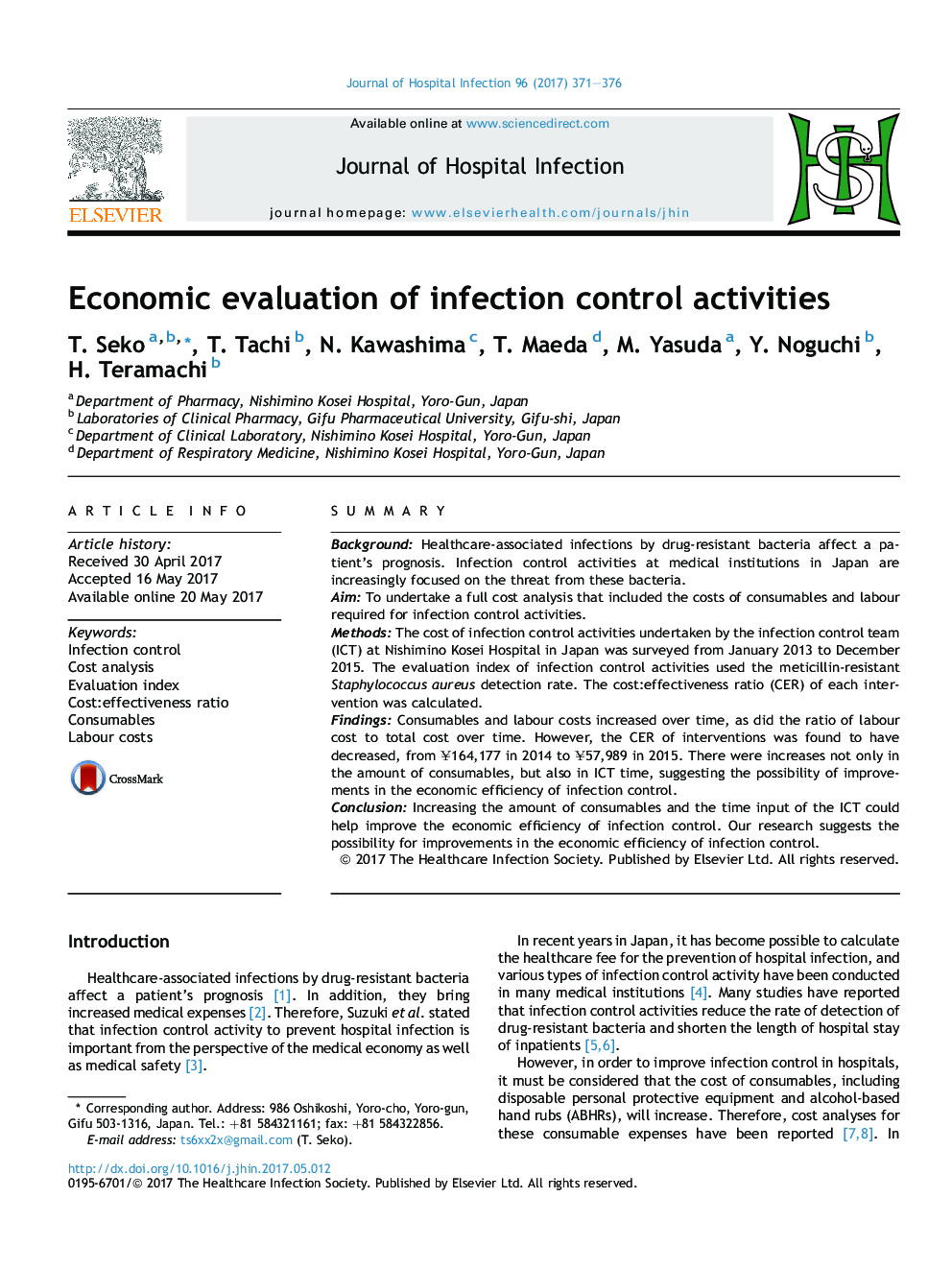| Article ID | Journal | Published Year | Pages | File Type |
|---|---|---|---|---|
| 5668448 | Journal of Hospital Infection | 2017 | 6 Pages |
SummaryBackgroundHealthcare-associated infections by drug-resistant bacteria affect a patient's prognosis. Infection control activities at medical institutions in Japan are increasingly focused on the threat from these bacteria.AimTo undertake a full cost analysis that included the costs of consumables and labour required for infection control activities.MethodsThe cost of infection control activities undertaken by the infection control team (ICT) at Nishimino Kosei Hospital in Japan was surveyed from January 2013 to December 2015. The evaluation index of infection control activities used the meticillin-resistant Staphylococcus aureus detection rate. The cost:effectiveness ratio (CER) of each intervention was calculated.FindingsConsumables and labour costs increased over time, as did the ratio of labour cost to total cost over time. However, the CER of interventions was found to have decreased, from ¥164,177 in 2014 to ¥57,989 in 2015. There were increases not only in the amount of consumables, but also in ICT time, suggesting the possibility of improvements in the economic efficiency of infection control.ConclusionIncreasing the amount of consumables and the time input of the ICT could help improve the economic efficiency of infection control. Our research suggests the possibility for improvements in the economic efficiency of infection control.
